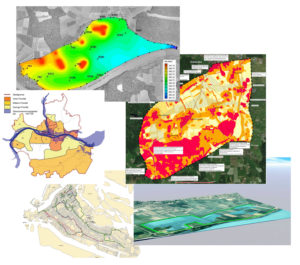Meta Description
GIS Development Officer plays a vital role in geospatial technology. Learn about key skills, responsibilities, and career prospects in this 3000-word guide.

Table of Contents
| Section | Subtopics |
|---|---|
| 1. Introduction | Overview of GIS Development Officer Role |
| 2. What is GIS Development? | Definition, Importance, Industry Applications |
| 3. Key Responsibilities of a GIS Development Officer | System Development, Data Management, Integration |
| 4. Essential Skills for GIS Development Officers | Programming, Spatial Analysis, Remote Sensing |
| 5. Tools & Technologies Used | GIS Software, Programming Languages, Cloud GIS |
| 6. Educational Requirements & Certifications | Degrees, Certifications, Online Courses |
| 7. Career Opportunities & Growth | Industries Hiring, Salary Trends, Future Scope |
| 8. GIS Development vs. GIS Analyst | Key Differences, Job Roles Comparison |
| 9. Challenges in GIS Development | Data Accuracy, Integration, Software Updates |
| 10. Future Trends in GIS | AI in GIS, 3D Mapping, Big Data Integration |
| 11. Best Practices for GIS Development Officers | Workflow Optimization, Best Software Practices |
| 12. Industry Case Studies | Successful GIS Projects Worldwide |
| 13. How to Get Started as a GIS Development Officer | Beginner Guide, Career Path |
| 14. FAQs | Common Questions About GIS Development Officers |
| 15. Conclusion | Summary, Final Thoughts |
1. Introduction
Geographic Information Systems (GIS) have transformed how businesses and governments handle geospatial data. A GIS Development Officer is responsible for designing, developing, and maintaining GIS-based applications and databases. With the rapid growth of spatial data, the demand for skilled GIS professionals is on the rise.
2. What is GIS Development?
GIS Development refers to creating, managing, and optimizing geospatial systems that capture, store, analyze, and visualize geographic data. It plays a key role in various industries such as urban planning, environmental management, logistics, and disaster management.
Industry Applications
- Urban Planning: Mapping city infrastructure and zoning regulations.
- Environmental Science: Tracking deforestation and climate change impact.
- Transportation & Logistics: Route optimization and traffic management.
- Agriculture: Precision farming and soil analysis.
- Emergency Services: Disaster response and risk assessment.
3. Key Responsibilities of a GIS Development Officer
- Developing GIS applications and solutions.
- Managing spatial databases and geospatial data.
- Analyzing and visualizing geographic information.
- Collaborating with teams for GIS implementation.
- Ensuring data accuracy and security.
4. Essential Skills for GIS Development Officers
Technical Skills:
- Programming: Python, JavaScript, SQL
- Remote Sensing: Image processing and classification
- Database Management: PostgreSQL, MySQL
- Cloud GIS: Google Earth Engine, ArcGIS Online
Soft Skills:
- Problem-solving
- Team collaboration
- Communication skills
5. Tools & Technologies Used
| Category | Examples |
| GIS Software | ArcGIS, QGIS, MapInfo |
| Programming Languages | Python, R, JavaScript |
| Database Management | PostgreSQL, SQL Server |
| Web Mapping Tools | Leaflet, OpenLayers |
| Cloud GIS | Google Earth Engine, AWS |
6. Educational Requirements & Certifications
- Degree Options: Geography, Computer Science, GIS
- Certifications: ESRI Certification, GISP, Remote Sensing Certification
- Online Courses: Coursera, Udemy, edX
7. Career Opportunities & Growth
GIS professionals can work in government agencies, private firms, and research institutions. Salary trends show an average of $70,000 – $100,000 per year for experienced GIS Development Officers.
8. GIS Development vs. GIS Analyst
| Role | Responsibilities |
| GIS Development Officer | Develops and manages GIS software |
| GIS Analyst | Analyzes and interprets spatial data |
9. Challenges in GIS Development
- Handling large datasets efficiently.
- Keeping up with evolving technology.
- Ensuring data security and privacy.
10. Future Trends in GIS
- AI & Machine Learning in GIS
- 3D GIS and Virtual Reality Mapping
- Big Data & IoT Integration
11. Best Practices for GIS Development Officers
- Use standardized data formats.
- Automate repetitive tasks.
- Stay updated with the latest GIS trends.
12. Industry Case Studies
Case Study: GIS in Disaster Management
FEMA uses GIS for flood risk analysis, helping local governments prepare for natural disasters.
13. How to Get Started as a GIS Development Officer
- Learn GIS software like ArcGIS and QGIS.
- Master programming languages such as Python and JavaScript.
- Gain hands-on experience through internships or projects.
14. FAQs
Q1. What does a GIS Development Officer do?
A GIS Development Officer designs, develops, and maintains GIS applications and geospatial databases.
Q2. What are the key skills needed for GIS Development?
Technical skills like programming, database management, and remote sensing are crucial.
Q3. Which industries hire GIS professionals?
Urban planning, transportation, environmental science, and defense sectors hire GIS experts.
Q4. How can I start a career in GIS?
Get a degree in GIS-related fields, learn GIS software, and obtain relevant certifications.
Q5. What is the salary range for a GIS Development Officer?
Salaries range from $50,000 for entry-level positions to $100,000 for experienced professionals.
Q6. What are the latest trends in GIS Development?
AI integration, cloud GIS, and 3D mapping are the latest advancements in GIS.
Must be read:
Bank of Punjab Jobs in Faisalabad March 2025 Advertisement – Latest Vacancies & How to Apply
15. Conclusion
GIS Development Officers play a crucial role in managing and analyzing geospatial data. With the right skills, education, and experience, this career path offers promising opportunities in various industries. Staying updated with the latest GIS trends ensures long-term career success.
To apply for this job email your details to admin@govtjobtime.com